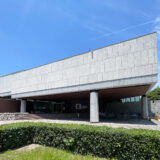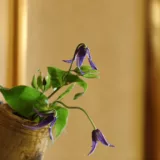What is a Kagai?
Kagai is an area in a Japanese city where Geiko(Geisha), Maiko, and other female entertainers gather to offer traditional Japanese performing arts and crafts.
Originally started in the Edo period (1603-1867), this culture, also known as Hanamachi, was mainly for entertainment and banquets, where traditional performing arts such as Japanese dance and shamisen were performed. Kagai is popular among tourists as a place to experience traditional Japanese culture.
Kagai in Kyoto
There are currently five major Kagai in Kyoto. Each has its history and culture, and traditions are still being passed down today.
- Gion Kobu
This is the most famous Kagai in Kyoto. It is a gathering place for high-ranking Geiko and Maiko. It is especially lively during the Gion Festival. - Gion Higashi
Adjacent to Gion Kobu, Gion Higashi is another Kagai that retains its historical townscape. It is characterized by a slightly more casual atmosphere than Gion Kobu. - Pontocho
Located along the Kamo River, Ponto-cho is an emotionally rich Kagai with narrow alleys lined with ryotei (traditional Japanese restaurants) and teahouses. Kawayuka (river floors) offers beautiful views of the Kamo River. - Miyagawa-cho
Miyagawa-cho is a relatively small-scale Kagai among the five Kagai. However, its traditional culture is still alive and well, with Geiko and Maiko playing an active role. - Kamishichiken
Kamishichiken is located in the northern part of Kyoto and has a quiet and calm atmosphere. It is said to be the oldest Kagai in Kyoto.

Maiko and Geiko
- Maiko (apprentice geiko)
Maiko1 is an apprentice of Geiko, a young woman between 15 and 20 years old.
Maiko is characterized by a gorgeous kimono and distinctive white makeup without tabi (socks).
Maiko also wear a hana-kanzashi (hairpin) in their hair and speak in the Kyoto dialect. - Geiko2
Geiko is a more experienced woman who was promoted from Maiko’s rank.
Geiko wears a more subdued costume, hairstyle, and a simpler kimono than Maiko.
Like Maiko, Geiko performs traditional arts such as singing, dancing, and shamisen.
Differences
The differences between Maiko and Geiko mainly lie in their age and experience, as well as in their kimonos, hairstyles, and makeup. Maiko dresses youthfully and glamorously, while Geiko expresses more mature beauty.
How to meet Maiko and Geiko
To meet a Maiko or Geiko, you can enjoy a meal with them or watch their performance at Ochaya (a teahouse) in Kyoto’s Kagai district. However, as Ochaya is only available by introduction, first-time visitors should usually make reservations through a travel agency or other such service.
Alternatively, each of the five Kyoto Kagai districts holds an annual “Odori no Kai” (dance performance), in which a maiko or geiko performs a spectacular dance.
This “Odori-no-kai” is held at a theater in each of the five Kyoto Kagai districts. The general public can watch live performances of Maiko and Gaiko by obtaining a ticket.
Miyako Odori (dance performance) – Gion Kobu

- When: April every year
- Place: Gion Kobu Kaburenjyo
- Overview: Miyako Odori3 is a representative dance performance of Gion Kobu, one of Japan’s most famous dance troupes, which has been held since 1872. Started after the Meiji Restoration to promote Kyoto, it features splendid dances based on the themes of Kyoto’s four seasons and customs. It is a popular event that attracts tourists from all over Japan.
Kamogawa Odori (Kamogawa Dance) – Pontocho

- Time: Every May
- Place:Pontocho Kaburenjyo
- Summary: Kamogawa Odori4, first held in 1927, is a dance performance featuring Maiko and Geiko from Pontocho. It features dances based on the history and legends of Kyoto, along with beautiful scenery along the Kamo River. Visitors can enjoy dances that preserve the traditions of Pontocho while incorporating modern elements.
Kyo Odori (Kyoto Dance) – Miyagawa-cho
- When: April every year
- Place: Miyagawa-cho Kaburenjyo
- Summary: 5Kyo Odori is a dance performance by the Maiko and Geiko of Miyagawa-cho. It started in 1927 and features performances based on themes of Kyoto’s four seasons and events. With a relatively friendly atmosphere, this dance troupe is well-loved by the locals.
Kitano Odori (Kitano Odori) – Kami Shichiken
- Period: Every March
- Place: Kamishichichiken Kaburenjyo
- Summary: Kitano-odori is a dance performance featuring Maiko and Geiko from Kaminashichiken6 and has been held since 1924 (Taisho 13). Originating from a Shinto ritual at Kitano Tenmangu Shrine, the gorgeous dances are performed to celebrate the coming of spring. It is a quiet and dignified dance that evokes the history and traditions of Kamishichiken.
Gion Odori (Gion Dance) – Gion Higashi
- When: November every year
- Place: Gion Kaikan
- Summary: Gion Odori7 is a dance performance featuring Maiko and Geiko from Gion Higashi8. It began in 1935, and dances reflecting the unique traditions of Gion Higashi are performed. It is a tasteful event that can be enjoyed along with the autumn leaves.
Gion Kagai Art Museum9
Also, in May of this year, a museum opened in Gion Kobu to exhibit materials and works of art related to Geiko and Maiko in Gion Kobu.
At this museum, visitors can learn about the history and culture of Gion, as well as valuable materials related to the lives of Geiko and Maiko. They can also watch Maiko and Geiko dance and take commemorative photos.

Kagai and kogei
Kagai and Kogei are important elements of Kyoto’s traditional culture. Kimonos, hair ornaments, and fans worn by Maiko and Geiko are made by Kyoto Kogei craftsmen. These crafts add color to the kagai culture and enhance the beauty of the Maiko and Geiko. In addition, the crafts used in the kagai are closely connected to the traditional Kyoto Kogei, leaving a deep impression on visitors.
In this way, Kagai and Kogei complement each other and form the cultural charm of Kyoto.
footnote
- https://en.wikipedia.org/wiki/Maiko ↩︎
- https://en.wikipedia.org/wiki/Geisha ↩︎
- https://miyako-odori.jp/english/ ↩︎
- https://en.kamogawa-odori.com/ ↩︎
- https://www.miyagawacho.jp/ ↩︎
- https://www.maiko3.com/ ↩︎
- https://www.gionhigashi.com/gion.html ↩︎
- https://www.gionhigashi.com/ ↩︎
- https://gion-museum.com/es/ ↩︎




